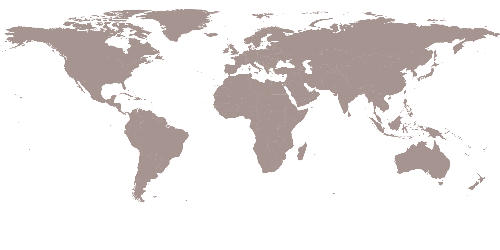“Saving Portete” Enters a New Phase of Community-Led Construction
Holcim Foundation Awards winner revives vernacular techniques and showcases holistic approach to sustainable development
“Saving Portete” Enters a New Phase of Community-Led Construction
-
1 / 5
Saving Portete in Ecuador – Project Update May 2025
Now under construction, the project led by Ecuadorian collective RAMA estudio is transforming Portete Island through a holistic approach that combines local materials, ancestral building techniques, and inclusive community processes.
-
3 / 5
Saving Portete in Ecuador – Project Update May 2025
The project combines local engagement with hands-on education, teaching the community about the benefits of passive architecture—offering sustainable, comfortable living solutions particularly suited to rural or low-resource areas.
-
4 / 5
Saving Portete in Ecuador – Project Update May 2025
A thoughtful redesign of the children’s area, El Palenque de los Niños, incorporates input from all age groups and provides inclusive, climate-responsive spaces built using local materials and passive design principles.
-
5 / 5
Saving Portete in Ecuador – Project Update May 2025
The site is being transformed into a symbolic place for gathering and remembrance, honouring the arrival of the first Afro-descendants in Ecuador and strengthening cultural identity through community-led design.
Last updated: May 19, 2025 Esmeraldas, Ecuador
The project, led by Ecuadorian architecture collective RAMA estudio, is transforming Portete Island through a holistic approach to sustainable development that fuses local materials, ancestral building techniques, and inclusive community processes. Each component of the project turns the island into a “living classroom” and the implementation of the project marks the start of a comprehensive process to preserve and revalue Afro-Ecuadorian cultural heritage.
First phase of project completed
The community-led construction of the Palenque de Libertad, a space intended to host cultural and social activities, was completed in February 2025, following a process of participatory design. A thoughtful redesign of the children’s area (El Palenque de los Niños) and floating dock that improves access to boats especially for the elderly also reflects the community’s priorities: climate-responsive shade, inclusive access, and easy maintenance using local materials.
The team has made major progress since early 2024 in fund-raising and project implementation to kickstart the revitalisation of Portete’s Central Park, including the installation of a floating dock, shaded gathering spaces, and a rehabilitated children’s play area. The site is transformed into a symbolic place for gathering and remembrance, commemorating the arrival of the first Afro-descendants in Ecuador.
Saving Portete in Ecuador – Project Update May 2025
The project combines local engagement with hands-on education, teaching the community about the benefits of passive architecture—offering sustainable, comfortable living solutions particularly suited to rural or low-resource areas.
The design and construction process has actively involved more than 30 local residents and incorporated the perspectives of children, youth and adults. Twelve local youth learnt traditional bamboo and toquilla straw techniques through certified workshops. Toquilla straw is a traditional Ecuadorian fibre known for its use in Panama hats and indigenous construction techniques.
Innovative structural systems using bamboo triangulations and locally sourced materials have been developed, alongside new methods for material curing and joint connections. A standout feature is the Central Park canopy, constructed with a stable conical bamboo structure and topped with a traditional thatched roof—built by 12 community members using ancestral weaving methods. The bamboo lattice is designed to withstand the loads exerted on the structure, with its conical shape providing excellent resistance to both static and dynamic loads.
Saving Portete in Ecuador – Project Update May 2025
A thoughtful redesign of the children’s area, El Palenque de los Niños, incorporates input from all age groups and provides inclusive, climate-responsive spaces built using local materials and passive design principles.
Empowerment and education
The project has also become a symbol of economic and social empowerment. Women-led enterprises have supplied materials including bamboo from Acero Verde – a cooperative of women bamboo workers – and the workforce includes island youth now gaining certifications and new livelihood skills. The youth now also contribute to their household finances and energize the economy. Tourism interest is also on the rise, with visitors engaging with the construction process as it unfolds.
The project also serves to educate youth in the community about the advantages of passive architecture. Passive sustainability tools provide means to live comfortably – particularly in rural areas, or those lacking economic resources.
Exploring alternative channels for funding
Despite significant progress, securing public funding remains a challenge – even though municipalities and ministries acknowledge the importance of the project. Bureaucratic hurdles and a focus of government expenditure on security has motivated the team to seek funding from alternative sources including design competitions and international support. “We’ve applied to five funding processes, and so far, we’ve won one,” the team notes.
The project was awarded USD 25,000 by the National Institute of Cultural Heritage (INPC) competition to revive traditional construction techniques. The team’s perseverance is paying off, as they continue to attract international recognition. The project has been recognized by the Ecuadorian Center for Sustainable Building (CEES) National Sustainable Architecture Award and a finalist spot in the 2025 DIVIA Architecture Award (Diversity in Architecture), in addition to the Holcim Foundation Awards 2023.
Winning the Holcim Foundation Awards prize expanded awareness of the project beyond the community. RAMA estudio are working with other teams in Ecuador and internationally to provide additional improvements to the community including a mental health and wellness project, equipment to control mosquito populations in a dengue-endemic area, responsible waste management, water treatment systems and solar energy systems.
With an inauguration planned for June, the Saving Portete project is on track to become a replicable model for community-led, culturally rooted, and environmentally responsive vernacular architecture in vulnerable regions.








